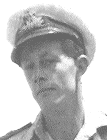
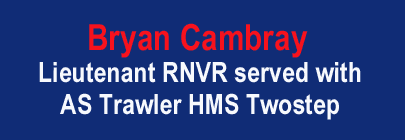
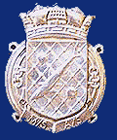
 |
 |
 |
|
Bryan Cambray remembers what it was like when his ship HMS Twostep was required to play her part in the Anzio Landings Operation Shingle - The Anzio Landings 'That
something was up' became only too obvious as the harbour and anchorage
in Naples began to fill in late December, 1943, and even more so in
the January. There were numerous landing craft, from the small to the
large LSTs, so there was to be a landing somewhere, soon. But where?
Rumours of the destination were rife, ranging from the south of France
to one of the large Italian ports such as Leghorn or Civitavecchia. |
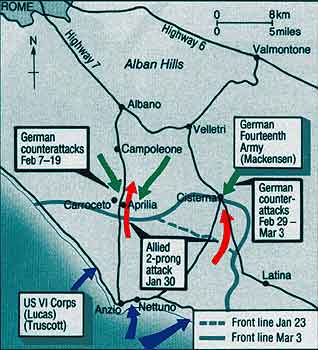 |
All
was soon revealed -- on January 20 we, that is HMS Twosrep, a Dance-class
armed AS/MS trawler, were to escort a group of small landing craft to
land at Anzio in Operation Shingle on January 22 - and a more heavily
armed and determined bunch of American soldiers had never seen. To use
an Americanism, the scuttlebutt had it that they were mainly men who
had escaped from Europe or had other, very personal, scores to settle
-- at least, that was what the crew heard! "Our" lot however,
were British. |
|
We
were in good company -- two other Dancers, the Minuet and Hornpipe -
had been allocated the same task, all three of us sailing independently.
Leaving Pozzuoli we sailed south between Capri and the mainland and
then headed north up past the Isles of Ponza, leaving them well to starboard
-- they were to be our last real 'fix' -- and then steam until we came
to a submarine showing a green light. It would then be turn to starboard
anti lead the landing craft to the bench. It was extremely dark that night and because the sea was almost dead calm, none of the soldiers was seasick. to my joy (and almost disbelief as navigating officer) I was able to report to my CO, L.t. B.L. Moir, RNVR, that we were dead on course as I was able to get a couple of 'fixes' on Ponza - I assumed it was Ponza away! Green
Light Changing
course, we steamed on, then looking in vain for the green light. Constantly
checking the log, peering through binoculars, checking the charts and
course again and again I was convinced that it should be in sight NOW!
But it wasn`t. More checks -- time was running on and my C.O. decided
that we must have overshot the turning point. There was a sea mist.
|
|
There
was nothing to do but to order the convoy by loudhailer to turn through
190 degrees (W/T or Aldis lamps were not to be used under any circumstances)
in the hope that the light would miraculously appear. This was exceedingly
difficult and chaos reigned for a while but, fortunately there were
no collisions and we eventually proceeded in an orderly manner' in
the opposite direction. Just as we were turning a silent grey shape
slid by, seemingly within touching distance. It was an E-boat! Its
crew must have been as surprised as were - before either skipper or
guns' crews could take any action it roared away disappearing into
the mist. Would it return? We were all on tenterhooks anyway and this
simply heightened the tension. |
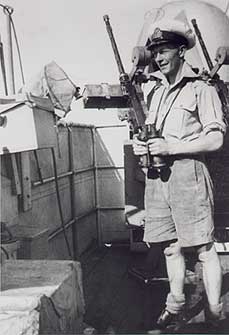 Lt. Bryan Cambray, RNVR
Lt. Bryan Cambray, RNVR |
Bryan Cambray
Nick Clark © 2001
 |
 |